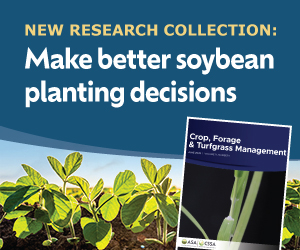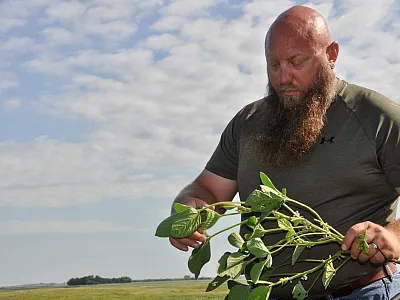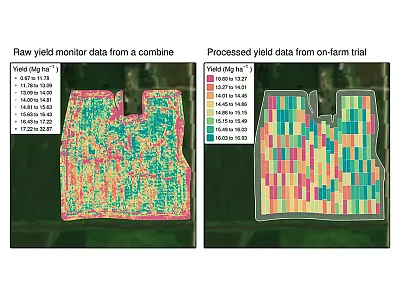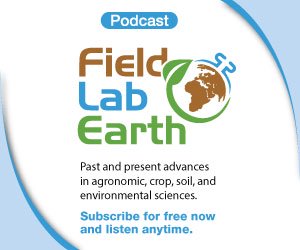Soil Health: What We Know—and Don’t Know


Soil health has long been recognized as important. There are many proven practices known to build and maintain soil health, but there are other practices that are suspect. Measuring soil health is happening, but it is an immature science. Will we find that the existing soil health tests are meaningful? Will new methods be developed? What will the collective efforts of those implementing the aforementioned practices be upon yields? Crop quality? Carbon sequestration equilibrium? Soil and environment sustainability? And, of vital importance, what is the financial sustainability for growers and society? Earn 1 CEU in Soil & Water Management by reading the article and taking the quiz.
The importance of soil has been recognized since ancient times. The first published mention of “soil health” was in a thesis of Henry A. Wallace (1910), who would eventually be the Secretary of Agriculture under President Franklin D. Roosevelt. In that same year, the first book with “soil fertility” in its title was published and began with the following statement.
“… ultimate failure results for the landowner unless provision is made for restoring and maintaining productiveness.” (Hopkins, 1910)
Loss of topsoil and depletion of soil fertility has resulted in many historical disasters. President Roosevelt established the Soil Conservation Service in 1935 and is often attributed with saying “A nation that destroys its soil destroys itself” in an alleged letter to the governors about this initiative.
We have long recognized the importance of having a healthy soil. Recently, “soil health” has become a “megatrend” in agriculture. Although soil health has long been recognized as important in general, current work is seeking to: (1) refine the definition, (2) quantify beneficial practices, and (3) decide how best to measure it.
The health of the soil references its ability to grow plants while providing ecosystem services needed for sustainability. The Intergovernmental Technical Panel on Soils defines soil health as “the ability of the soil to sustain the productivity, diversity, and environmental services of terrestrial ecosystems” (FAO‐ITPS, 2023). The USDA‐NRCS defines soil health as “the continued capacity of soil to function as a vital living ecosystem that sustains plants, animals, and humans. Healthy soil gives us clean air and water, bountiful crops and forests, productive grazing lands, diverse wildlife, and beautiful landscapes” (USDA‐NRCS, 2023). They identify the essential functions that healthy soil provides and state their primary principles of management as shown in Figure 1.
Despite widespread agreement on these tenets, some practices are widely accepted as beneficial while others are more controversial. And quantification of soil health using laboratory tests have proven somewhat elusive with continued efforts to find meaningful correlations with the principles of soil management (Figure 1).
Proven Practices and Impacts
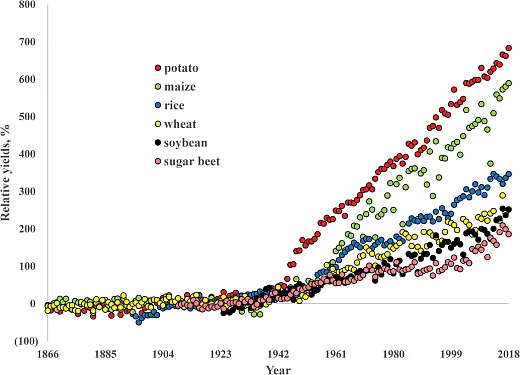
Extraordinary advances in agricultural and other sciences resulted in intensification of crop production via the Green Revolution (Figure 2). This enabled a rapid and unprecedented population increase over the past century. Ever‐growing world populations place further demand on the agricultural system to provide the food, fuel, and fiber needed by more than eight billion people on earth. This continuing need requires proper management of the chemical, physical, and biological properties of soils. These include the management principles promoted by NRCS (Figure 1), but also include other best management practices that have resulted in our highly successful agricultural efforts.
The chemical properties of the soil are a vital aspect of healthy soil. This includes factors such as pH and nutrient and salt concentrations. Advances in the liming of acid soils and fertilization were major enabling factors for the Green Revolution. Continued efforts to build and maintain the fertility of the soil are vital for the health of the soil and sustainable agriculture. This is largely done through the proven practice of soil analysis with custom application of fertilizers and soil amendments.
Soil physical properties are also important for soil health. These properties are focused largely on the water and air relations in soils. Soil physical properties are heavily influenced by several factors, especially tillage and traffic.
Potential benefits of tillage include: loosening and warming of the soil, weed control, uniform seed bed, air and water infiltration, and reduction of water/sediment runoff. Despite these short‐term benefits, the long‐term impacts can be negative, including: destruction of soil aggregates, increased compaction, decreased water infiltration, increased potential for erosion, and reduction of soil organic matter (especially in high organic matter soils).
Historically, multiple and complete tillage operations were the norm. In recent decades, there has been a highly successful effort to overcome the challenges of reduced or no‐tillage with the advent of sophisticated techniques and equipment. In no‐till systems, growers must exert increased care to avoid traffic on wet soils as they have limited means to correct the compaction rapidly. However, implementation of reduced tillage can decrease the risk of loss of highly valuable topsoil and increase soil organic matter, aggregate stability, and water infiltration/percolation. Increases in organic matter increase water‐ and nutrient‐holding capacity and further increase aggregate stability (Figure 3).

High levels of crop residues on the soil surface due to reduced tillage are a challenge in terms of planting crops, but technological advances have largely overcome these concerns. And these crop residues are the primary reason for reduced soil loss in reduced‐tillage systems. They also generally aide in further improvement of water relations.
There are concerns with reduced tillage regarding the formation of stratified layers of varying nutrition and acidity. These concerns are not justification to universally avoid reduced tillage, but they should be considered based on the agroecosystem and monitored and managed with proven techniques. Most crops can be effectively grown with reduced tillage. However, doing so in some circumstances, such as with soils prone to sealing or with many root crops that require digging for harvest, can prove particularly difficult or impossible.
Other proven beneficial practices to improve soil physical properties are the use of cover crops in certain instances, as well as various management techniques to improve water infiltration and drainage (e.g., reservoir tillage, tile installation, and use of proven soil surfactants/amendments).
The biology of the soil is an important property of soil health. A healthy soil is teaming with macroorganisms (e.g., earthworms and pill bugs) and microorganisms (e.g., fungi and bacteria). Although some are destructive or pathogenic, most are beneficial for plants and soil. These organisms exist in a complex macro/microbiome food web. As such, it is generally best when there is a large population of living things with a wide diversity of species. With natural predators for each, this scenario commonly helps minimize plant damage caused by any one species. A soil with ample numbers and diversity of species is generally fostered with the same things that promote plant growth, namely: minimal toxins (e.g., salts, xenobiotics) and optimum levels of temperature, water, nutrients, oxygen, and energy sources (e.g., decaying organic matter).
Thus, management practices that benefit plant growth with optimal physical and chemical soil properties can also benefit the biology. In addition, cropping systems that include a diversity of crops grown in rotation with each other, as opposed to continuous cropping, tend to have less pest and pathogen pressure and, thus, less need for pesticides that can have a negative, albeit temporary, impact on pest populations.
Another proven practice involving biology, and impacting soil fertility, is inclusion of legumes in the cropping system. Legumes synergistically work with the Rhizobium bacteria to fix nitrogen out of the air. As such, legumes do not need much, if any, added nitrogen. There is also a residual effect or “credit” for the subsequent crop(s). For example, yield studies following an alfalfa crop often show that no nitrogen is needed for the first year, often with reductions in the second as well. Other legumes (e.g., peanuts, beans, clover, peas, and other cover/commodity crops) also infuse nitrogen into the system but do not generally have as large of an impact as alfalfa.
Common Misunderstandings
Although these proven practices can be beneficial, there are a few popular notions in some soil health circles that do not stand up to scientific scrutiny. These include the perceptions that fertilization is unnecessary and cover crops or biostimulants can fully replace proven management practices.
Biostimulants include a wide array of products with just as wide of a range of claims. Some of these have some science‐based evaluations showing various levels of response while others lack data to support their use or are only beneficial when plants are stressed.
One class of biostimulants is microbial inoculants. There are proven inoculants, such as mycorrhizae fungi and the aforementioned Rhizobium applied to legumes. Mycorrhizae are known to synergistically infect plant roots and potentially extend their ability to take up water and nutrients in certain, albeit not all, conditions. However, there are other microbes sold under the umbrella of biostimulants that show no significant positive impact on plant growth, and/or the microbes are not viable due to caustic storage conditions. Other classes of biostimulants also have some products being efficacious and others not.
Biostimulant labels often have the claim of replacing fertilizers. Similarly, some mistakenly believe that the best management practices of rotating crops and planting cover crops will infuse a wide range of nutrients into the soil. As such, some espouse that fertilizers are not needed.
It is true that some nutrients are supplied naturally. The non‐mineral nutrients (carbon, oxygen, and hydrogen) come from water and air. Some mineral nutrients can also come from the air and water (e.g., nitrogen in legumes, sulfur in air pollution, chloride from sea spray, and calcium, magnesium, sulfur, chloride, and/or boron in irrigation waters). Additionally, the soil formation process breaks down rocks, etc. and releases nutrients for plant uptake, but this is generally at a very slow rate. It is also possible that various biostimulatory processes can enhance nutrient uptake efficiency. All these nutrient inputs may be adequate in native ecosystems and even for some nutrients in agricultural systems. But it is a false notion that the entire crop’s needs for all nutrients can be met in these ways. This is especially true in high‐yield agricultural systems that intensify the demand for nutrient supply (Hopkins & Hansen, 2019).
The immutable fact is that removing crops from fields also removes nutrients contained within. The law of conservation of mass states that matter, including nutrients, may neither be created nor destroyed. If these nutrients (especially nitrogen, phosphorus, and potassium) are not replaced, they often become deficient and require replenishment with fertilization. Frequently, there is little to no initial drop in yield if fertilizer applications cease, but continually neglecting the fertility of the soil will eventually “mine” these reserves and result in poor yields and even crop failure (Figure 4). It is essential to monitor and replace removed nutrients.
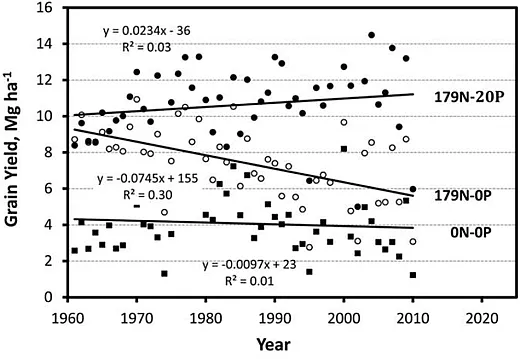
In a similar vein, some claim that biostimulants and/or cropping systems eliminate the need for pest and pathogen control. It is true that some control can be achieved without pesticide application, such as some green manures providing naturally occurring fumigation chemicals. In general, good agricultural management practices will generally reduce pest pressure. Like humans, plants that are healthy are more likely to handle problems better than unhealthy ones. Long and diverse crop rotations and the practices previously listed will generally aide in this and are considered part of “integrated pest management.” But, healthy plants, like healthy humans, can still get sick and die due to these infections. And, sometimes in our efforts to keep the soil continuously covered with vegetation, we can create a host for an unwanted predator to the crop being grown.
In general, it is important to continue to follow proven management practices with scientific backing. It is also good to be open to new products and procedures. But it is wise to depend on repeated successful scientific evaluations under specific conditions and crops, and then conduct multi‐year trials on a small portion of the farm before making major changes. It is also important to realize that some things, such as eliminating fertilizer, may work in the short term but not in the long run.
Soil Testing
It is helpful to be able to measure soil properties to be effective stewards of crops and soils. Testing the chemical and physical properties of the soil is a common and helpful practice. Some tests are better than others with some having poor and others having good correlations to yield and other production goals. For example, the iron soil test is very poorly correlated with response to iron fertilizer, but many of the phosphorus tests have reasonable correlations if done properly. In general, these are good tools for managing soil fertility, pH, salts, so forth.

However, testing for “soil health” is largely a new undertaking. Some organizations have recommendations for soil health testing, but there is not always consensus on the best approach. The USDA‐NRCS have recommended quality indicators of “soil health” (https://bit.ly/3qf3ogO). A few of these tests, such as carbon analysis, are well developed and studied. Others, including most of the biological soil tests, are a less mature science. It is possible to test for overall biological activity and even determine specific species present. But there is not an extensive database for many of these “soil health” tests. And only a handful of laboratories are currently offering soil health testing.
Cooperating with NRCS, the Soil Science Society of America’s North American Proficiency Testing (NAPT) program has recently adopted several soil health tests for inclusion by cooperating laboratories if they choose to participate (naptprogram.org/). However, most of these methods have not yet been proven to be reproducible across laboratories as has been done for the chemical and physical tests being offered (Hopkins et al., 2022). And, even if tests are reproducible, there still needs to be fieldwork correlating these findings to meaningful production outcomes. For example, Svedin et al. (2023) identified 415 ppm permanganate oxidizable carbon (POxC) as a threshold for maximum corn grain productivity. This is an exciting development, but it is concerning that they found poor correlations with most of the other soil health tests currently available. Others have found similarly poor correlations with yield, but important relationships with other soil parameters (Crookston et al., 2022, 2023; Rogers et al., 2018). This does not mean it is the end, but rather it is the beginning of a long road of research and practical application working cooperatively together to improve production and sustainability.
Summary
Soil health has long been recognized as important. New efforts in soil health are a “megatrend” in agriculture. There are many proven practices known to build and maintain soil health, but there are other practices that are suspect. Measuring soil health is happening, but it is an immature science. Will we find that the existing soil health tests are meaningful? Will new methods be developed? What will the collective efforts of those implementing the aforementioned practices be upon yields? Crop quality? Carbon sequestration equilibrium? Soil and environment sustainability? And, of vital importance, what is the financial sustainability for growers and society?
References
Crookston, B.S., Yost, M.A., Bowman, K., & Veum, K. (2022). Relationships of on‐farm soil health scores with corn and soybean yield in the midwestern United States. Soil Science Society of America Journal, 86, 91–105. https://doi.org/10.1002/saj2.20355
Crookston, B.S., Yost, M.A., Bowman, K., Veum, K., & Stevens, J.R. (2023). Microbial respiration gives early indication of soil health improvement following cover crops. Journal of Soil and Water Conservation, 78, 272–281. https://doi.org/10.2489/jswc.2023.00015
FAO‐ITPS. (2023). Global soil partnership. Food and Agriculture Organization of the United Nations and the Intergovernmental Technical Panel on Soils. https://www.fao.org/global‐soil‐partnership/itps/en/
Hopkins, B.G., & Hansen, N.C. (2019). Phosphorus management in high‐yield systems. Journal of Environmental Quality, 48, 1265–1280. https://doi.org/10.2134/jeq2019.03.0130.
Hopkins, B.G., Lawley, J.R., & Cardon, G.E. (2022). Soil testing: How precise Is my lab data? Crops & Soils, 55, 46–49. https://doi.org/10.1002/crso.20224
Hopkins, C.G. (1910). Soil fertility and permanent agriculture. Ginn and Company. Rogers, C.W., Schroeder, K., Rashed, A., & Roberts, T.L. (2018). Evaluation of soil tests for measuring potentially mineralizable soil N in southern Idaho soils. Soil Science Society of America Journal, 82, 1279–1289. https://doi.org/10.2136/sssaj2018.01.0054
Schlegel, A.J., & Havlin, J.L. (2017). Corn yield and grain nutrient uptake from 50 years of nitrogen and phosphorus fertilization. Agronomy Journal, 109, 335–342. https://doi.org/10.2134/agronj2016.05.0294
Svedin, J.D., Veum, K.S., Ransom, C.J., Kitchen, N.R., & Anderson, S.H. (2023). An identified agronomic interpretation for potassium permanganate oxidizable carbon. Soil Science Society of America Journal, 87, 291–308. https://doi.org/10.1002/saj2.20499
USDA‐NRCS. (2023). Soil health. https://www.nrcs.usda.gov/conservation‐basics/natural‐resource‐concerns/soils/soil‐health
Wallace, H.A. (1910). Relation between live stock farming and the fertility of the land. Bachelor’s thesis. Iowa State University, Ames, IA. https://doi.org/10.31274/rtd‐180813‐7404
Self-Study CEU Quiz
Earn 1 CEU in Soil & Water Management by taking the quiz. For your convenience, the quiz is printed below. The CEU can be purchased individually, or you can access as part of your Online Classroom Subscription.
- Loss of topsoil and depletion of soil fertility has resulted in many historical disasters.
- True.
- False.
- In addition to water regulation and nutrient cycling, which of the following is NOT a function of soil health?
- Sustain plant and animal life.
- Filter and buffer pollutants.
- Provide physical stability and support.
- Eliminate all soil bacteria.
- Extraordinary advances in agricultural, such as fertilization technology, and other sciences resulted in intensification of crop production via the Green Revolution.
- True.
- False.
- Which of the following is a proven practice to maintain the fertility of the soil?
- Using cover crops can replenish all nutrients removed at harvest.
- Using biostimulants can “release” an unlimited supply of nutrients from soils.
- Custom application of fertilizers and soil amendments based on soil analysis can build and maintain the fertility of the soil.
- Eliminating tillage and retaining all crop residues on the soil eliminates the need for fertilization and liming of acid soils.
- Ceasing fertilization and liming will result in immediate and massive yield losses. Testimonials of those who stopped these practices with no or minimal yield loss in the short term are evidence that other practices can replace the use of expensive fertilizers and amendments.
- True.
- False.
- Although tillage is sometimes necessary and can have short-term benefits, the potentially negative impacts include destruction of soil aggregates, increased compaction, decreased water infiltration, and
- reduced organic matter and increased erosion potential.
- increased salts and pH.
- reduced soil fertility.
- reduced need for pesticides.
- The recent megatrend of “soil health” is proving that old practices are outdated and need to be replaced entirely with cover cropping and reduced tillage.
- True.
- False.
- Which statement is the most correct regarding soil health testing?
- All soil health tests are highly correlated to yield responses.
- Soil health testing is routinely offered at most agricultural laboratories.
- The SSSA’s NAPT program is currently evaluating the reproducibility of soil health tests identified with the help of the USDA-NRCS.
- Soil health testing is a mature and well-developed science.
- Based on the current state of the science (as of 2022), which soil test method has an identified threshold for maximum productivity and, thus, shows some promise as a management tool? (Note: other tests may prove to have identified thresholds in the future.)
- Permanganate oxidizable carbon (POxC).
- DTPA iron.
- Mehlich III iron.
- Carbon sequestration.
- In general, which of the following is the optimal biological condition of the soil?
- Eliminate all microorganisms and macroorganisms as all of these destroy crops.
- All bacterial and fungal infections are negative for plants.
- Legumes are particularly negatively impacted by all bacterial associations.
- Ideally, it is best to have a diverse number of species with large overall populations.
Text © . The authors. CC BY-NC-ND 4.0. Except where otherwise noted, images are subject to copyright. Any reuse without express permission from the copyright owner is prohibited.



